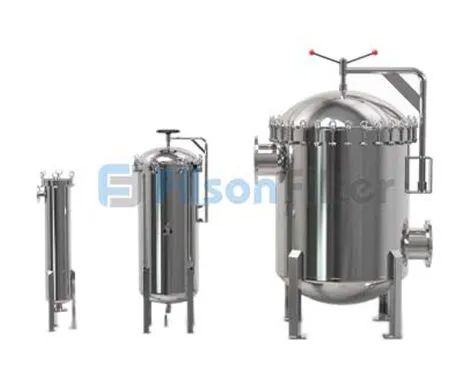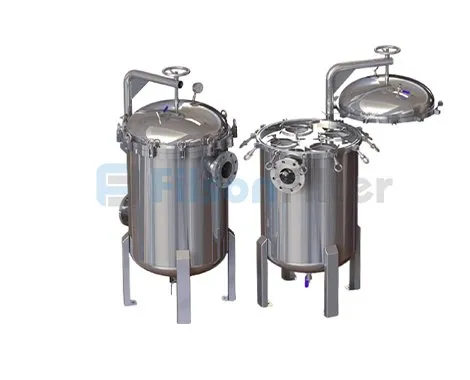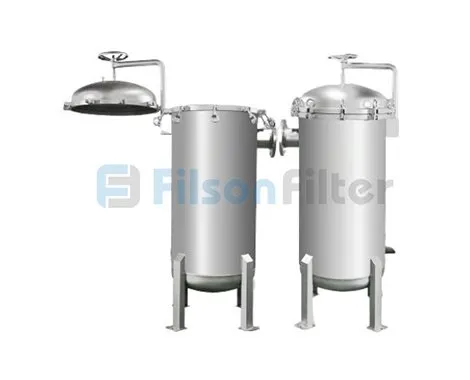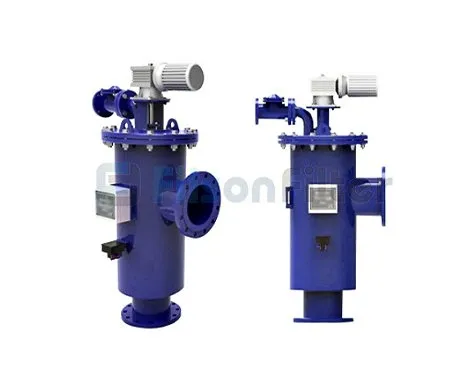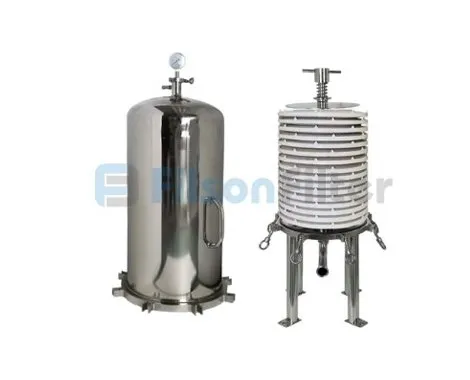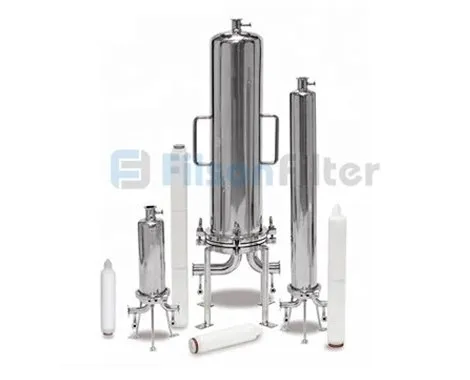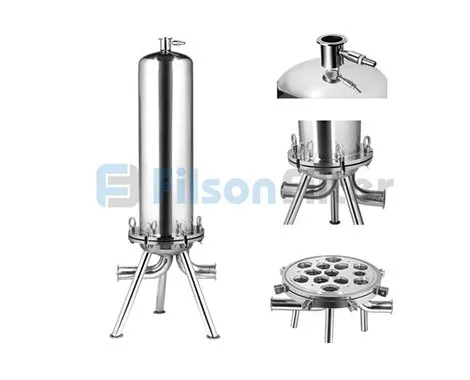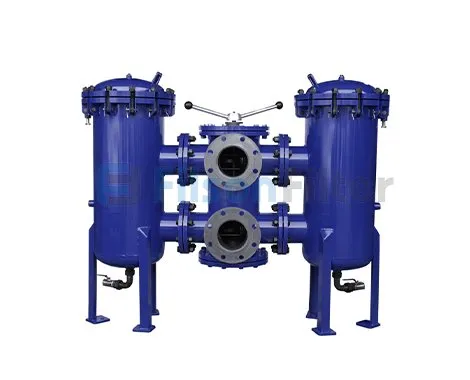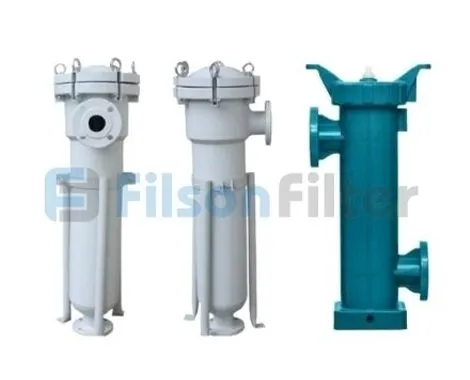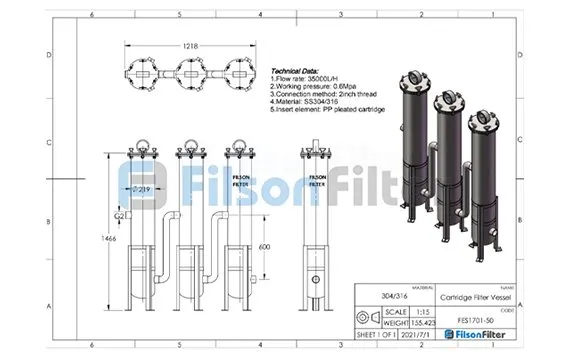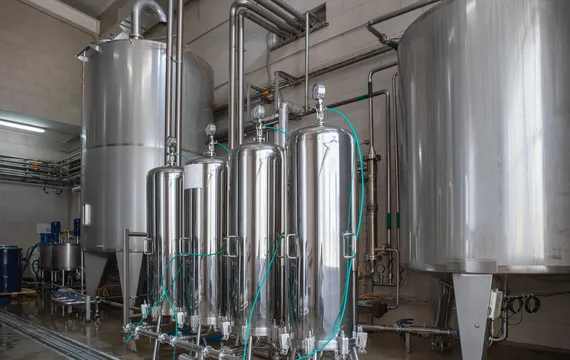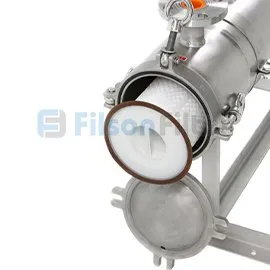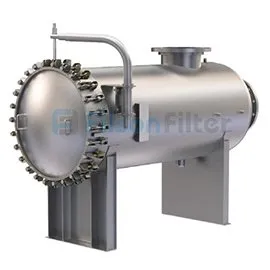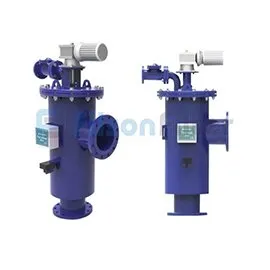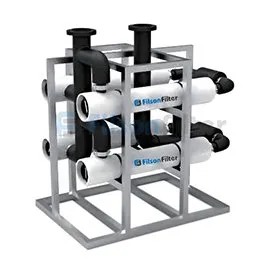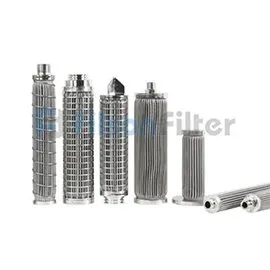Industrial Filter Housing Manufacturer
As a professional manufacture of industrial filter housing in China, we can provide you various high-quality products with a preferred price.
- Easy to install and replace in the filtration process
- Fast and reliable delivery within 25 days
- Customized services available
- Larger flow rate, lower maintenance
What is Industrial Filter Housing
Filson industrial filter housing, as a critical part in the filtration process, is a vessel to hold filter cartridges, bags or media. It can prevent filter cartridge from tearing or destroying to a great extent.
The common materials of our industrial filter housing are SS304/316L, carbon steel, aluminum or plastics. It can withstand high temperature up to 260℃ and high pressure up to 300 psi. Besides, our products can work normally under corrosive environments.
With more than two decades experience of manufacturing industrial filter housing, our engineers are equipped with the expertise to fabricate industrial cartridge filter housing, bag filter housing, water filter housing, plastic filter housing, basket strainer housing, etc.
Industrial Filter Housing Categories
Filson provides various materials to produce industrial cartridge filter housing, like stainless steel, carbon steel, FRP or plastic. Having good mechanical strength, Our cartridge filter housing is rated at 300 psi with a maximum temperature of 260℃.
Filson industrial bag filter housing, also called bad filter vessel, includes single bag filter housing and multi bag filter housing. And it can accommodate more than 24 filter bags in one filter housing, so the flow rate can reach as high as 5000 GPM.
Our industrial stainless steel filter housing is mainly fabricated with SS 304 or 316L. It can work normally under high temperature and high corrosion environments. As for the inlet and outlet connection, you can choose flange, thread or other customized methods.
Filson industrial water filter housing, also known as liquid filter housing, is usually made of stainless steel, carbon steel, plastic or others. With flow rate up to 400 m3/h, filson industrial water filter housing can be widely used in food&beverage, chemical and other industries.
Usually being made of SS 304/316L through a polished process, Filson industrial lenticular filter housing has more smooth surface to reduce the cohension of particles. Our product is often made into vertical structure with 4 legs to increase stability and lessen space.
Fabricating with advanced sealing and welding technology, Filson industrial cuno filter housing can largely reduce consumption and improve efficiency. Our cuno filter housing is cleanable and reusable for long service life of 4 times than conventional one.
Filson industrial sanitary filter housing can not only remove impurities, but also inhibit the growth of bacteria under high temperature condition up to 225℃. Since our products have passed 3 – A design standard certification, you can use it with confidence.
Being designed with two filter housings, Filson industrial duplex filter housing is appropriate for the continuous filtration process. Therefore, its flow rate can reach as high as 7800 l/min. With different sizes design, our duplex filter housing can be used in various industries.
Filson industrial plastic filter housing is made of PP, styrene-acrylonitrile(SAN) and PVC, so lightweight is one outstanding features. Having excellent chemical compatibility, industrial plastic filter housing can better resist corrosion, acid or alkali.
Industrial Filter Housing Benefits

To guarantee quality and well performance, Filson industrial filter housing is often in accordance with ASME code, 3 – A sanitary standard, FDA or other quality standards.
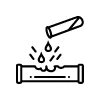
Filson industrial filter housing can withstand high temperature up to 260℃. And it can also work normally under harsh environment, like corrosion, acid, etc.

You can choose different finishes on making industries filter housing surface, like pickling, electro polishing, abrasive blasting or sandblasting, passivation, barreling, burnishing, grinding, etc.

Filson industrial filter housing is usually made of stainless steel, carbon steel, PP, etc. It can be cleaned and reused many times for a long service life.
Advantages of Industrial Filter Housing
- Reliable quality in accordance with ASME and FDA
- Can be cleaned manually or automatically
- Good compatibility to house different filtration system
- Easy to replace or install due to its lightweight
- Vertical and horizontal construction available
- Smooth and bright surface through various surface finishes
- Advanced sealing and welding technology to reduce loss
- Robust construction, good mechanical strength
- Professional and patient sales
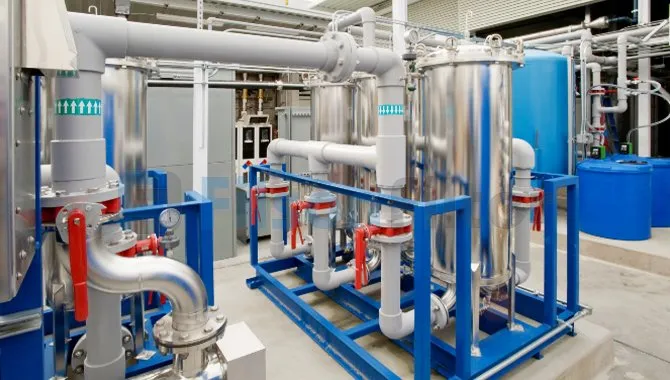
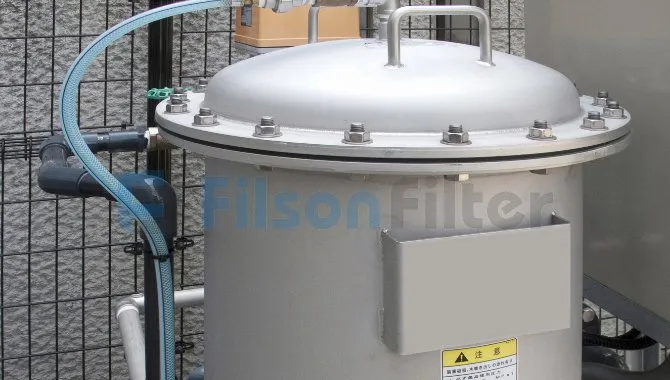
Main Features of Industrial Filter Housing
- High temperature resistance up to 260℃
- Better chemical property, high corrosion resistance
- Large filtration area with designed length up to 60’’
- Huge flow rate up to 10000 GPM
- Smooth surface with internal Ra 0.6 micron and external 0.8 micron
- Multiple construction material from metal to plastic
- Good compatibility with single or multiple cartridges
- High pressure resistance up to 300 psi
- Simple construction with low maintenance costs
Industrial Filter Housing Working Principle
Industrial filter housing operates in a simple way:
Firstly, let dirty fluids flow in the filter through inlet of filter housing.
Then, fluids will enter the filter cartridge, bag or basket directly due to the wrapping of the housing. And filter cartridge, bag or basket will remove impurities and let clean fluids flow out.
Finally, filtered fluids will exit through the outlet of filter housing.
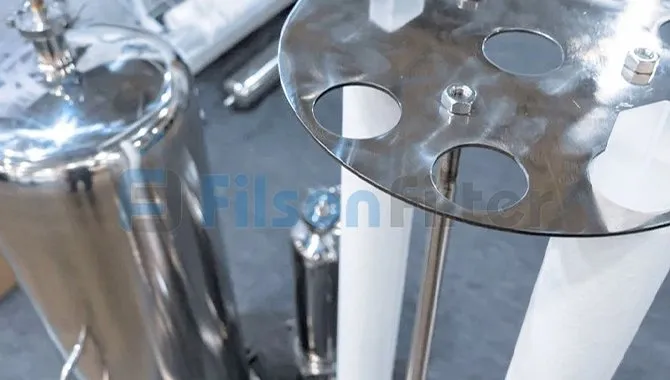
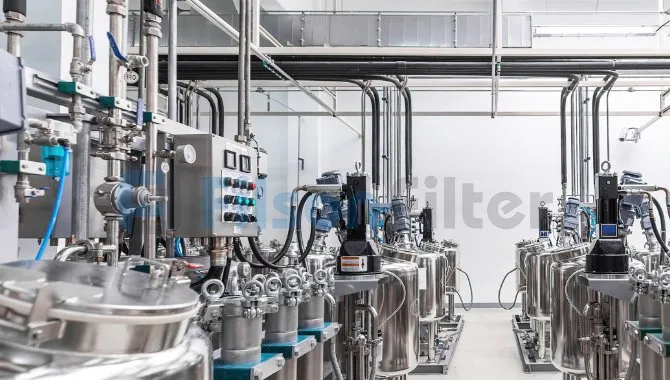
Main Material of Industrial Filter Housing
Filson often uses following materials to fabricate industrial filter housing. Different material has different features, and you can choose it based on your applications:
- Stainless steel 304/316: Having nickel, chromium and molybdenum, SS 304/316 has better ductility and corrosion-resistance.
- Aluminum: Aluminum features in its lightweight, but it’s not durable and corrosion-resistant.
- Carbon steel: High carbon steel is hard and has resistance to tear. And its mechanical strength will be enhanced through adding alloys.
- Plastic: PVDF, PP and nylon are light, economical and can work in high temperature and corrosion conditions.
Why Choose Filson Industrial Filter Housing
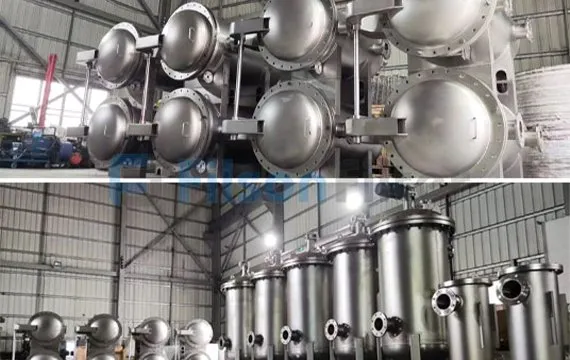
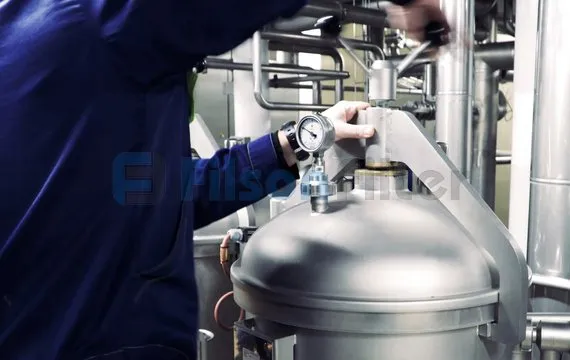
Filson industrial filter housing is flexible to contain single or multiple cartridges, and the cartridge quantity can even reach 500. For this reason, our industrial filter housing has tremendous flow rate up to 10000 GPM.
Most of our customers will choose SS 304, 316, carbon steel to manufacture industrial filter housing, and our products can also withstand pressure up to 300 psi. If you have little space to place filter housing, vertical construction is your best choice.
Filson industrial filter housing usually adheres to the standards of ASME code, FDA, EPA, etc. And we will conduct some test like proof and burst test, helium leak test or flow test before transportation.
As Filson provide customized service and can make replacement industrial filter housing of other brands, like Hayward/Pentair/Pentek industrial filter housing. At the same time, our sales will offer you professional suggestions based on your applications.
- Construction Material: stainless steel 316L, aluminum, carbon steel, plastic
- O-ring / Gaskets Material: silicon, viton, EPDM
- Connection: DOE, SOE, 222, 226, NPT, flange
- Connection Size: 1/2’’ to 40’’
- Flow Rate: from 6 to 10000 GPM
- Standard Diameter: 2’’, 2.5’’, 4’’, 6’’, 8’’
- Designed Length: 5’’, 10’’, 20’’, 30’’, 40’’, 50’’, 60’’
- Internal/External Ra: 0.6 micron/0.8 micron
- Agricultural industry
- Water treatment industry
- Hospitals
- Food and beverage
- Pharmaceutical industry
- Cosmetic industry
- Textile and paint industry
- Chemical industry
- Oil and gas industry
- Pre-filtration for reverse osmosis(RO) system
Industrial Filter Housing Related Products
Industrial Filter Housing: The Ultimate FAQ Guide
If you have any question about industrial filter housing, you will find the answer right here.
Whether you want to learn about quality standards, design, features, classification or tests – all information you’re looking for is right here.
Keep reading to learn more.
This is a casing that surrounds a filter cartridge, filter baskets, or filter bags.
They come in different shapes, sizes, and designs.
There are several types of industrial filters that are responsible for a number of tasks.
They include:
Gas Filters
They are responsible for eliminating particles and contaminants from a liquid or a dry gas stream.
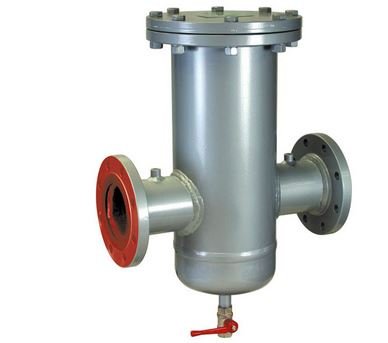
gas filters
Air Filters
These filters remove dust, dirt, and other contaminants from the air.
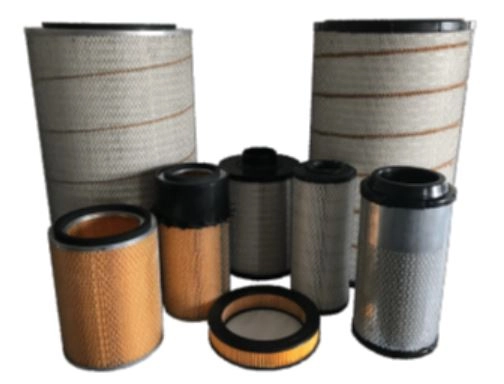
air filters
Strainers
This filter will eliminate large contaminants that other filter media cannot remove.
Also, you have to regularly clean the basket.
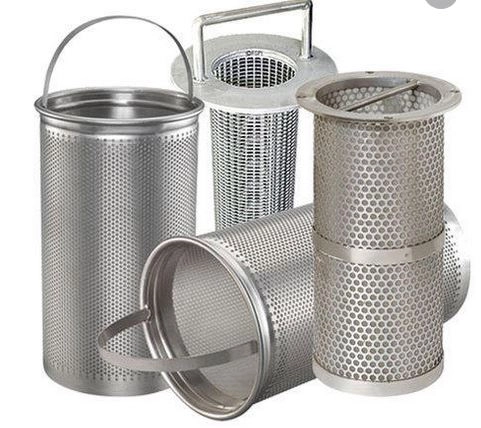
strainers
Hydraulic Filters
This is a filter that is suitable for purifying oils and other petroleum-based liquids.
Also, they can purify water-based liquids.
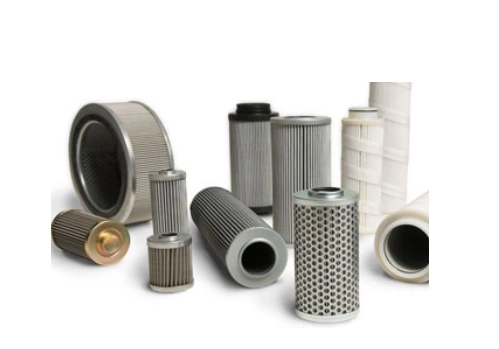
hydraulic filters
Panel Filters
This filter has the shape of a pan and are normally within ventilation and air conditioning systems.
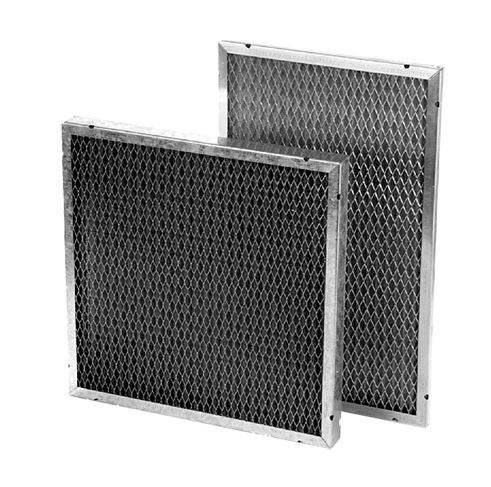
panel filters
Cartridge Filters
These are cylindrical but normally looks flat.
They form a barrier to sift out dirt, contaminants, and harmful solids from liquids.
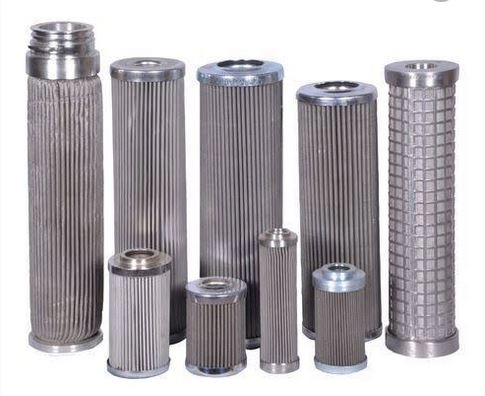
cartridge filter
Bag Filters
They come in varying designs and are suitable where you plan to eliminate a large amount of solid from liquids.
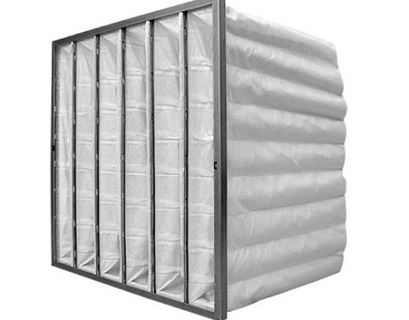
bag filter
Stainless steel is one of the strongest materials that you can use to make filter housings.
The benefits of using this material are that:
- It can deal with high pressure and low rates.
- Stainless Steel is easy to disinfect and clean.
- It also provides a stylistic appeal.
- Also, it withstands degradation from a huge pool of agents.
- It would not bend at high-temperature levels.
https://youtu.be/Sty1Lo_ns6M
These will ensure the filter housing is of good quality and performs the best filtration processes.
They include:
- ASME code
- Current Good Manufacturing Practices (cGMP)
- Pressure equipment directive 2014/68/EU
- CE mark of quality
- 3-A sanitary standard
- Environmental Protection Agency [EPA]
- Food and Drug Administration [FDA]
Several considerations that can affect the performance of this device are:
- Care and maintenance of the industrial filter housing.
- The condition of the installation process.
- Operating parameters such as pressure, temperature, and flow rate.
- The sort of fluid you are using within the system
- Type of material constriction that builds a filter housing.
An industrial filter housing will benefit you in a lot of ways.
Here are some benefits of using it:
- It lasts long hence you can use it for many years.
- Also, it will offer an improvement in the filtration speed.
- Besides, there is less maintenance costs that you will incur since it is simple.
- It will protect all the elements inside the housing from wear and tear.
- Also, it meets all the various filtration prerequisites.
- The housing is considerably small hence will save a lot when it comes to workspace.
- It can withstand high pressures within the system during the filtration process.
- Besides, it has a simple design and is also relatively light weight.
- The filter housing is also resistant to corrosion as it uses a high quality stainless steel body constriction.
- Also, the simple design allows one to easily replace the cartridges, bags, and baskets within the filter housing.
- It can also house different kinds of filtration systems.
The disadvantages should not deter you from purchasing one for use.
These include:
- The initial cost might be high meaning you will spend a lot to purchase it.
- Also, some need special installation parameters meaning you need to acquire knowledgeable personnel.
- There are also large housings that will occupy a considerable amount of space when installing.
One can use industrial filter housings in many scenarios.
They include:
- Agricultural industries
- Water treatment industries
- Hospitals
- Food and beverage industries
- Pharmaceutical industries
- Cosmetic industries
- Textile and paint industries
- Chemical industries
- Oil and gas industries
- Automotive industries
The filter housing works in a simple way.
First, the dirty fluid or air will enter through the inlet nozzle.
Then, filter housing directs it to the filter cartridge, bag, or basket that is within the filter itself.
These filter cartridges, bags, or baskets will assist in separating contaminants from the fluid or gas medium.
Once complete, the clean fluid or gas will exit through the outlet nozzle.
These are several desirable qualities and then include:
- The housing has to deliver a suitable separation effect.
- It should offer a large filtration space.
- Besides, it should have corners that curve which will minimize the chances of it breaking from high pressures.
- The curving corners will also make it easy to clean.
- Also, it has to adhere to international quality standards such as ASMA and PED.
- The housing should also have a pleasing and effective surface finishing.
- It should also convey a precise and high filtration process.
- The housing should contain low pressure loss in relation to the fluid you are processing.
- Besides, the construction should enable operators to open, repair, and replace the parts within the system with relative ease.
- Also, every industrial filter housing should be compatible and meet your specific operational filtration needs.
- The material constriction has to be resistant to chemicals and contaminants that are in the fluid you are filtering.
- Besides, the housing should withstand the operational pressure, flow rates, and process temperatures.
- The housing should be free of crevices or cracks that will house contaminants.
The purpose of testing is to ensure it can withstand high pressure levels and is also leak-proof.
Some of the testing techniques you can conduct include:
Proof and Burst Test
The measurement checks the working pressure of the industrial filter housing.
Using oil and pressure 1.5 times the maximum pressure for 30 minutes to verify this test. Helium leak testing
Helium Leak Testing
This test will ensure that the device is airtight at the connections and seals.
Add helium gas to the industrial filter housing for a minute, until it fills with water.
Inspect the seals as you turn up the gas pressure in steps.
Flow Testing
This test will calculate the appropriate pressure drop of the industrial filter housing.
One can apply water or helium gas depending on the filter type.
Measure the difference between inlet and outlet ports to assess the differential pressure.
Apart from adding a stylistic appeal, the right polishing would give the filter housing a competent touch.
Here are several surface finishes that you can use in an industrial filter housing:
Pickling
This method will use a combination of both nitric and hydrofluoric acids.
It will remove the low chromium layer of material and high-temperature scales away from the surface of the industrial filter housing.
These chemicals will also help in removing ferrous materials and ferric acid oxide.
When you eliminate layers of low chromium, you will enhance the resistance of the industrial filter housing to corrosion.
Electro Polishing
This is the reverse of electroplating.
The unevenness of the valleys and the surface will reestablish.
This happens through an electrochemical method.
Electro polishing, through getting rid of thin layers, eliminates:
- Oxide scales
- Pits
- Burrs
- Small cracks
- Ingrained contaminants
- Additional imperfections
This process is appropriate for all forms of steel material.
Besides, it delivers 30 times more resistance to corrosion when you compare it to passivation.
After polishing, the surface will portray a durable and appealing bright nature.
Abrasive Blasting or Sandblasting
This technique will force an abrasive material on the surface of metals.
Fluid on high pressure will increase the speed of the blasting material.
This high-pressure impact will:
- Smooth rough surfaces
- Roughen smooth surfaces
- Shape the surface of metals
- Remove the contaminants on the surface
Electroplating
This technique will use electric current to adhere another metal material on the surface of the substrate metal.
The benefits of electroplating include:
- It will enhance the resistance of the material to corrosion
- Also, it increases the resistance to wear and tear
- Besides, it will improve the stylistic appeal of the material
Passivation
This method will use nitric or citric acid to help in removing free iron and extra ferrous contaminants.
It will leave behind a resistant and protective layer of oxide that is extremely resistant to corrosion.
Besides, this technique is not appropriate for stainless steel grades that have low nickel and chromium amounts.
Also, this method is not suitable for furnishing surfaces that pass welding and brazing.
Barreling
In this method, you will place metal within a barrel that has abrasives.
The barrel will vibrate making the metals rub against the abrasive products causing the metals to have a shiny appeal to them.
Burnishing
In this technique, you will rub smooth tool on the surface of metals.
The operator applies appropriate pressure to enhance the finishing and the size of the surface.
Grinding
In this method, you will remove marks and levels.
Also, it will also clean the surface of the metal.
Industrial Etching
In this method, you will use a strong acid to cut metal surfaces.
Mechanical and Chemical Planarization
This method involves the use of chemical and mechanical forces that will smooth the surface of metals.
It is somehow a combination of chemical etching and abrasive polishing.
Thermal Deburring
This method involves the removal of burrs that come about during the production process.
These burrs arise due to milling, drilling, etc.
Here are some factors in which the design of an industrial filter housing depends on:
- Time of service
- Total cost
- The operating temperature
- Total suspended solids [TSS]
- Method of operation I.e. Batch or continuous.
- Filtration rating
- The flow rate
- Operating pressure
These differ from one filter housing to another.
They include:
- High quality 304 stainless steel material construction.
- Flexible and durable.
- Resistant to corrosion, high temperature, and pressure levels.
Since there are various industrial filter housings, they will differ in terms of their parts.
Some of them are very specific in their method of operation.
Here are some parts you may find in an industrial filter housing:
Caps
This is an integral component of the filter housing.
It operates by inhibiting fluids in the unit from leaking.
Also, it will prevent dust from entering the industrial filter housing.
Besides, they ensure you get the maximum filtration possible.
This is possible since it will securely hold the filter element within the filter housing.
Ensure that the caps of the industrial filter housing of high quality.
When you use low quality caps, the filter housing will have some leakages.
Leakages within the filter housing will destroy the parts of the unit.
Cartridge Couplers
This is a part of filter housing that will join two filter cartridges.
Also, it means it can double the capacity of the industrial filter.
All this is possible by extending the length of the filter thus enhancing the efficiency of the filtration process.
Besides, they will lower the production cost as you can reuse them.
Sumps
This component is at the bottom of the industrial filter housing.
It will hold all the fluid that did not undergo filtration during the filtration process.
Stands
These components will hold the industrial filter housing firmly on a surface.
They can come in varieties such as flexible and inflexible systems.
Industrial filter housings that have a small and many processes usually contain flexible stands.
Flexible stands make it possible for the operators to change the position of the filter housing during the filtration process.
When you are using continuous applications that have large processes, make use of inflexible stands.
Inflexible stands are stationary meaning the industrial filter housing is also stationary.
Pressure Release Valves
This component will help with the regulation of the pressure levels inside the filter housing.
They are usually on the side of the industrial filter housing.
Also, they make sure the filter housing does not explode or break during the filtration process.
It achieves this by ensuring the pressure will not go beyond the maximum level.
The Shell
This is the exterior part of the filter housing.
It can come from varying types of materials.
Most industrial filter housings use high-quality material that can withstand effects like:
- Pressure from the external environment
- Ensure the maintenance of the best chemical compatibility
Check Valve
This part will prevent air from entering the filter housing after the vent releases it into the atmosphere.
Outlet and Inlet Ports
The inlet port will allow fluids to enter the filter housing.
Outlet ports will help the fluids to exit the filter housing.
Bawl
This part will contain the cartridges and should be large enough to hold the correct number of cartridges.
O-rings
These parts assist in inhibiting leakages from occurring from the filter housing.
Drains
This part is at the bottom part of the filter housing and they help by eliminating products of the sump.
It allows you to collect fluid samples in the filter housing.
Also, it will assist you to access the elements in the system.
Mounting Holes
This part will help in fixing the industrial filter housing in a pipeline system.
Also, one can use it to remove the process fluids within the filter housing when you are replacing filter elements.
Differential Pressure Gauges
This part will assess the pressure drop in the whole filter element.
Also, it will alert you when it is time to replace the elements.
Sample Ports
These parts are at the area where you will find the incoming and outgoing process fluid ports.
It assists in drawing inlet and outlet samples to conduct quality tests.
Head
This component will seal the bowl once you install the filter elements.
It holds the pressure release valves, check valves, and the vent.
Vents
It is also known as the air elimination unit.
This component assists air within the industrial filter housing to exit after the process fluid fills it.
Also, it is automatic hence will shut once the air escapes into the environment.
There are several kinds of industrial filter housings to choose from.
They include:
- Polyvinyl chloride cartridge filter housing
- Self-cleaning filter
- Casted basket strainers
- Fabricated strainers
- Vent filter
- Polypropylene filter housing
- Polyvinyl chloride bag filter housing
- Cartridge filter housing
- Bag filter housing
- Y and T strainers
The best way to test for any leakages in an industrial filter housing is by the use of bubbles in a tight helium leakage test.
These are the steps that you can follow to conduct this test:
Step One
Connect the industrial filter housing to a tank that has gaseous helium.
Step Two
Insert the industrial filter housing underwater and repeatedly increase the pressure of the helium gas supply.
Step Three
Repeat this test at 25%, 50%, 75%, and 100% of the maximum working pressure that is allowable.
Continuously assess the production of the bubbles.
Step Four
When the bubble production occurs for over a minute, this will confirm that the industrial filter housing is leaking.
Choosing the best industrial filter housing ensures that it functions properly.
Also, it ensures that if offers durability to all the additional parts.
some of the factors worth considering include:
Ports
The position of the inlet and outlet ports varies from one model to another.
Ensure that your unit matches the industrial filter housing.
This will enable you to have the best piping units in place.
Mounting Processes
Installing filter housing influences the efficiency and price of the entire filtration system.
For example, systems that need varying fluid cleanliness levels require small filters at the point of usage.
This will enable you to achieve the best filtration than a central installation.
Always ensure the installation is noticeable within the pipeline system.
This enables one to conduct maintenance as it is easy to spot.
Also, consider the pressure drop when sizing the unit.
Pressure Rating
Ensure you select an industrial filter housing that will function suitably with your operational needs.
Determining this happens by assessing the maximum and nominal levels of pressure that the filter housing operates.
When you select a filter housing that will not meet your application rating, your system will have a lower efficiency level.
An instance is when you choose an industrial filter housing that performs at a lower pressure.
Using this system will damage all the filter elements if your unit functions at high pressure.
On the contrary, a high-pressure rating filter housing reduces the rate of fluid flow in a system that uses low pressure.
This will cause to an improper filtration process.
Drainage Options
A filter housing can have a manual or automatic drainage option hence select one depending on the available resources.
Automatic drainage systems will lower the need for human involvement.
Flow Rate
The various types of filter housing can accommodate specific flow rates.
Always select an industrial filter housing that matches the flow rate of your usage.
This enables you achieve the best transfer of pressure in the system.
Operating Temperature
It is important to know the suitable operating temperature for industrial filter housing.
Industrial filter housings suitable for low working temperatures than your application will result in a lower fluid viscosity.
This will affect the quality of the filtration process.
Configuration
The working area will affect the size of this system.
Also, the unique needs of the environment will determine the type you will choose.
Ensure you choose an industrial filter housing that meets international standards and integrity tests.
Make sure the work environment can accommodate the entire industrial filter housing.
Model and Design
Ensure you buy the correct model and series of the industrial filter housing.
The reason for this is because varying usages apply different filters.
For example, some designs enable you to place filters at the top, bottom, inside, outside, etc.
Selecting the suitable industrial filter housing model and design ensures it works appropriately with your unit.
The incorrect filter housing will result in incompatibility issues.
Body Material
The material that makes the housing depends on various parameters.
Some applications are good for meeting specific needs like cleanliness and temperature changes.
Make sure the material is compatible with:
- Chemical composition of the fluid
- Contaminants in the fluid
Price
Ensure the industrial filter housing is within your budget.
This cost includes:
- Installing
- Maintenance
- Extra features
- Purchasing
These filters are available in two distinct designs:
Vertical Industrial Filter Housing
This design is appropriate for use when you have a small work area.
The reason for this is because it occupies a considerably small area.
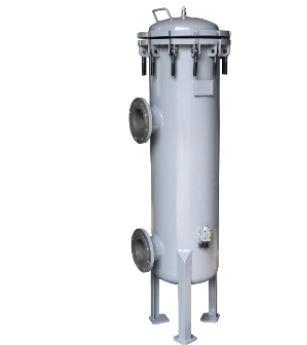
vertical industrial filter housing
Horizontal Industrial Filter Housing
This design requires a large work area.
It also provides a large filtration area with this allowing for a high flow rate than in vertical filter housing.
Besides, when you install it in an in-line position, it achieves a low-pressure drop than in a vertical housing.
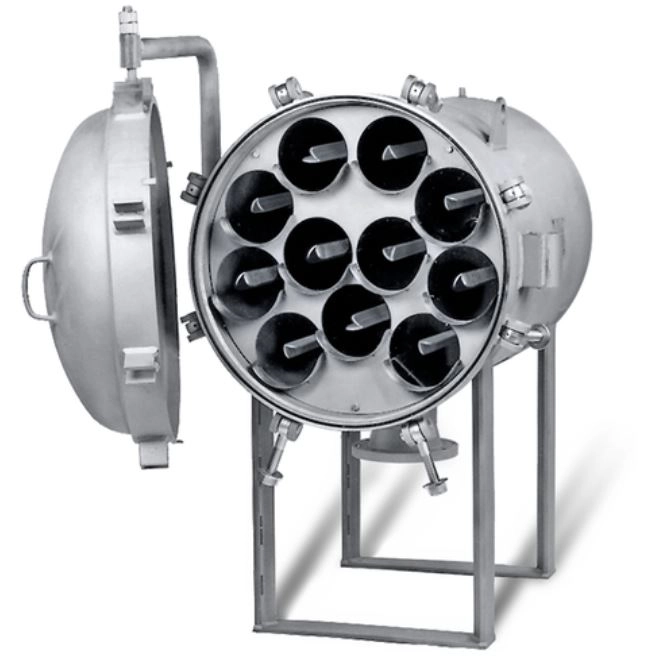
horizontal industrial filter housing
It is appropriate to replace an industrial filter housing when you notice cracks, bulges, dents, and crevices.
This means it cannot handle high-pressure levels within the system.
Different materials make up an industrial filter housing and it all depends on the filtration needs.
Some of these materials include:
PTFT Housing
This is a housing that can withstand chemicals.
Also, they come with stainless steel support bars on the exterior.
These support systems will enhance the strength between head connections and bowls.
Besides, they are hydrophobic thus suitable for making membrane housings that will eliminate water from gas streams.
These membranes allow gas to pass while repelling water.
Also, they are suitable for the filtration of water from hydrocarbon-based substances like diesel.
Stainless Steel
This is among the best materials that make up an industrial filter housing.
Stainless steel has carbon in low quantities of between 0.03% and 1% with iron.
Adding chromium [at least 11%] will enhance the resistance of this material to corrosion.
Depending on the amount of alloy you add, stainless steel comes in different grades like 200, 300, or 400.
Grade 300 stainless steel offers the best corrosion resistance.
Some include:
304 Stainless Steel
This has 8% nickel and 18% chromium.
Nickel improves the ductility of the steel.
Other materials available are carbon, silicon, manganese, and molybdenum.
It is affordable and formable than 316 stainless steel.
316 Stainless Steel
This has the following materials:
- Chromium at 16%
- Nickel at 10%
- Molybdenum at 2% – 3%.
Using high amounts of molybdenum increase the corrosion resistance.
It is suitable for making industrial housing filters that can withstand highly corrosive substances.
Also, it is good for an industrial filter housing that will be in the constant presence of water.
Besides, it is stronger and costlier than 304 stainless steel.
Aluminum Housing
This is appropriate for a wide array of applications as they are light.
However, they are not durable, are weak than steel or carbon steel, and cannot withstand corrosion from chemicals.
Carbon Steel
This material has carbon and iron alloys.
Other materials available include copper, silicon, and manganese.
Its strength relies on the quantity of carbon you add.
Carbon steel grades available include:
Mild Carbon Steel
It contains carbon levels between 0.05% and 0.3%.
This material is appropriate for less demanding operations.
It is affordable to make, has low tensile strength, and is easy to operate.
Carburizing will enhance the hardness of the surface.
Medium Strength
Carbon level ranges between 0.25% and 0.6%.
Manganese levels range from 0.6% and 1.65%.
It is hard than a low strength carbon.
Heating the material as you add alloying material such as nickel, chromium, or molybdenum will enhance its mechanical hardness.
High Carbon Steel
The carbon content here ranges from 0.6% to 1.7% and manganese from 0.3% and 0.9%.
It is hard and has a high resistance to tear and wear.
Also, you can enhance its hardness by adding some amounts of alloy elements.
This steel will withstand high pressures hence are less likely to break or crack.
Besides, it can rust and corrode easily thus not suitable for sanitary usages.
Plastic Housing
These are appropriate for use in highly corrosive environments, low pressure, and flow rates.
They are conducive to lightweight and non-corrosive substances.
These constructions are affordable and can operate at relatively high temperatures.
Materials you can use to make it include:
- Polyvinylidene difluoride [PVDF]
- PTFT
- Polypropylene
- Nylon
Low-pressure filter housing is ideal for low-pressure application.
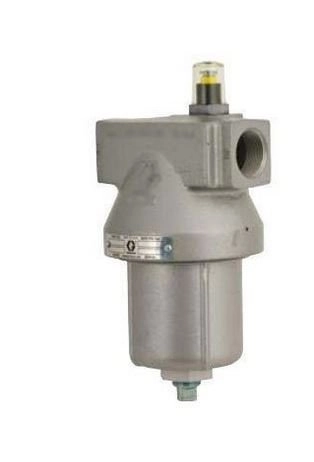
low pressure
High-pressure industrial filter housing can withstand high pressure and heat temperatures as they contain long-lasting materials.
The high-pressure industrial filter housing is also costly than low-pressure filter housing.
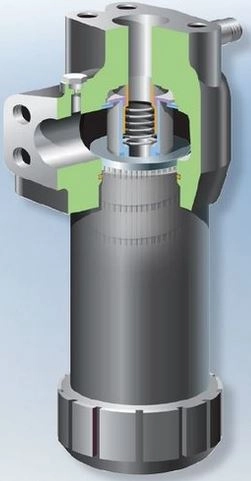
high pressure industrial filter
One can clean the housing either manually or automatically.
Manual cleaning needs operators while automatic cleaning happens automatically after a duration of time.
Maintaining this filter makes it durable and operational.
Repair or replace all broken or faulty components with new and genuine parts.
Use lubricants in gaskets to prevent tear and wear.
Seal all joints to eliminate leakages.
Completely shut down the system before opening it.
Clean the components regularly to prevent build up of contaminants.
The process involves:
Here are the steps on how to effectively install a filter housing to ensure its optimal performance:
- Establishing inlet and outlet valves
- Aligning the piping system.
- Using a stable support.
- Installing the correct industrial filter housing at the inlet and outlet ports.
- Connect the piping.
- Align then close the seals and gaskets.
- Allow fluid to enter by opening the shut-off valves.
- Cross-check the manual to ensure differential pressure reading is correct.
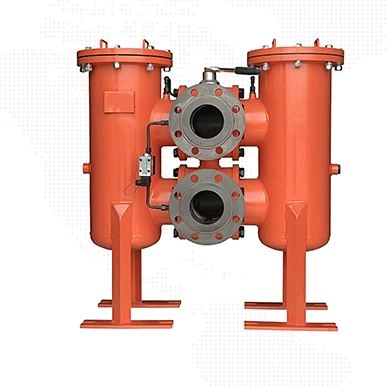
duplex industrial filter
One can use a simplex industrial filter housing in a number of applications.
Also, it is simple to open and clean a simplex system.
A duplex industrial filter housing is appropriate for the continuous filtration process.
Also, you can use a three-way valve to join two simplex housings to make a duplex housing.
Industrial duplex filter housing is durable with a long service time as they can hold a lot of dirt.
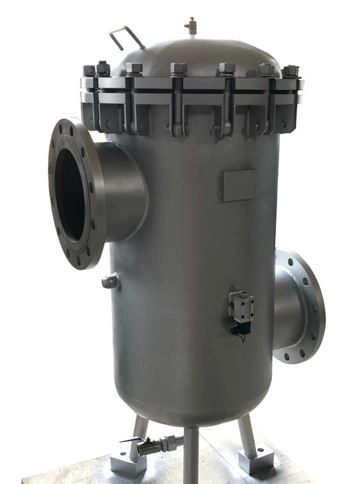
simplex industrial filter
They are:
- Material body.
- Condition
- Design
- Model
- Pressure and flow rating
- Process application
At FilSon Filters, we offer high-performance filter housings that can withstand all environmental conditions in industries.
So, if you have any question or inquiry about industrial filter housing, feel free to contact FilSon Filters team.
